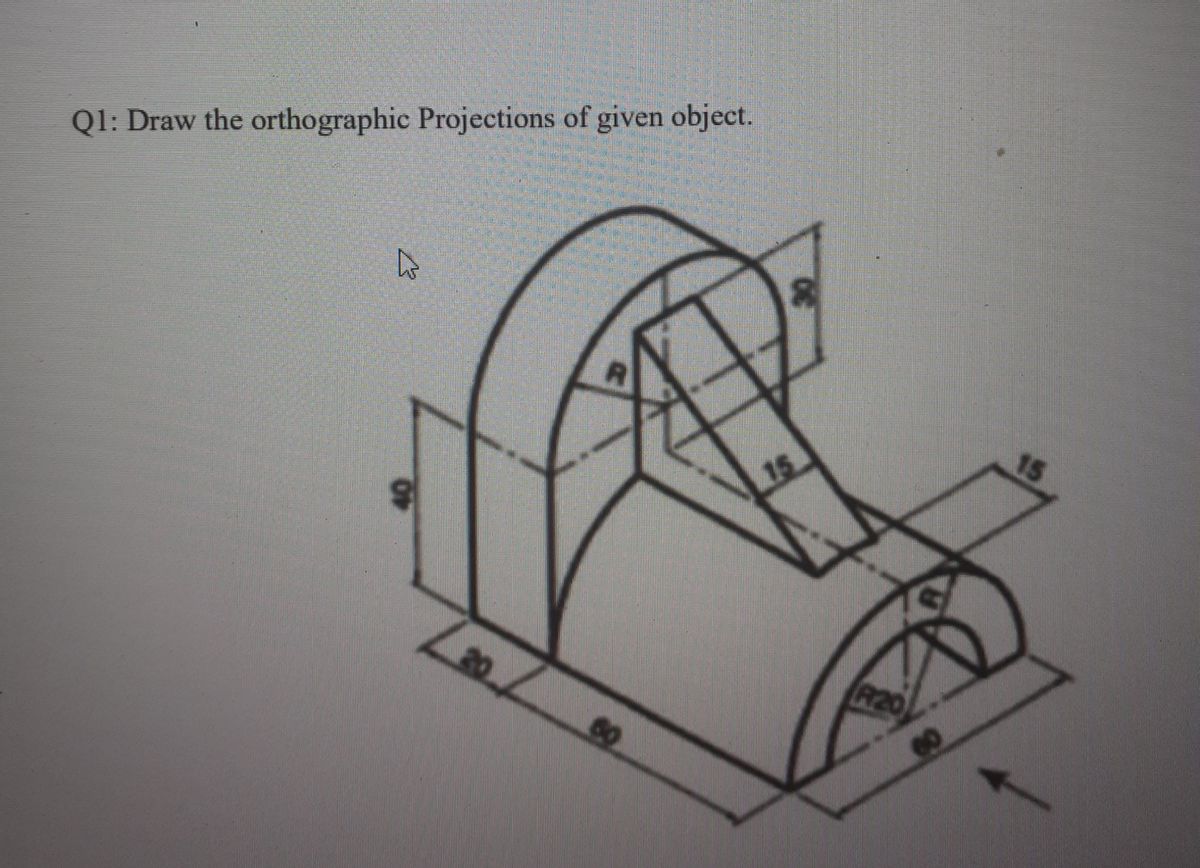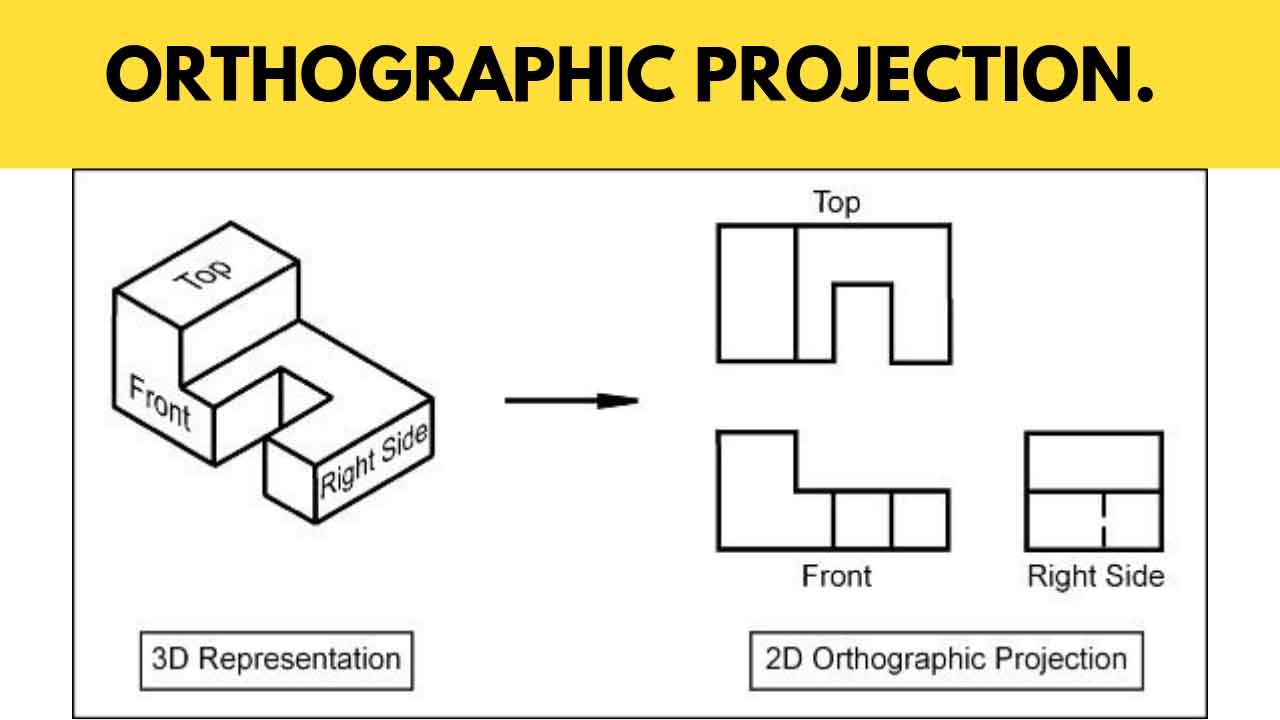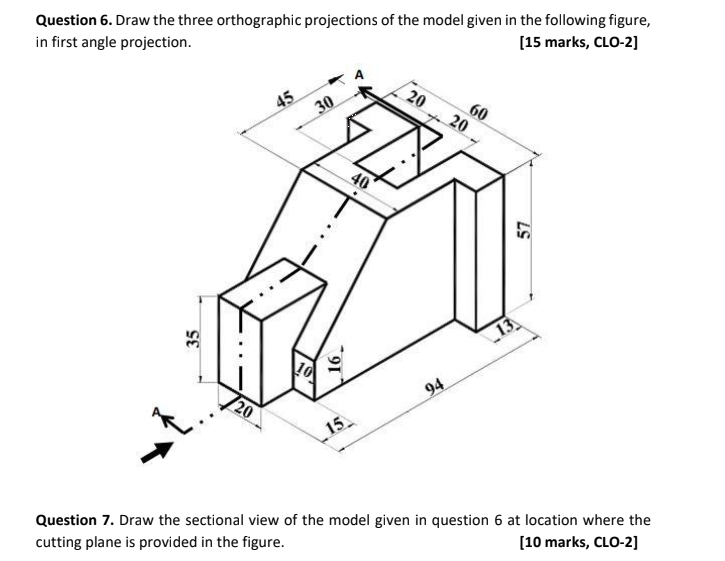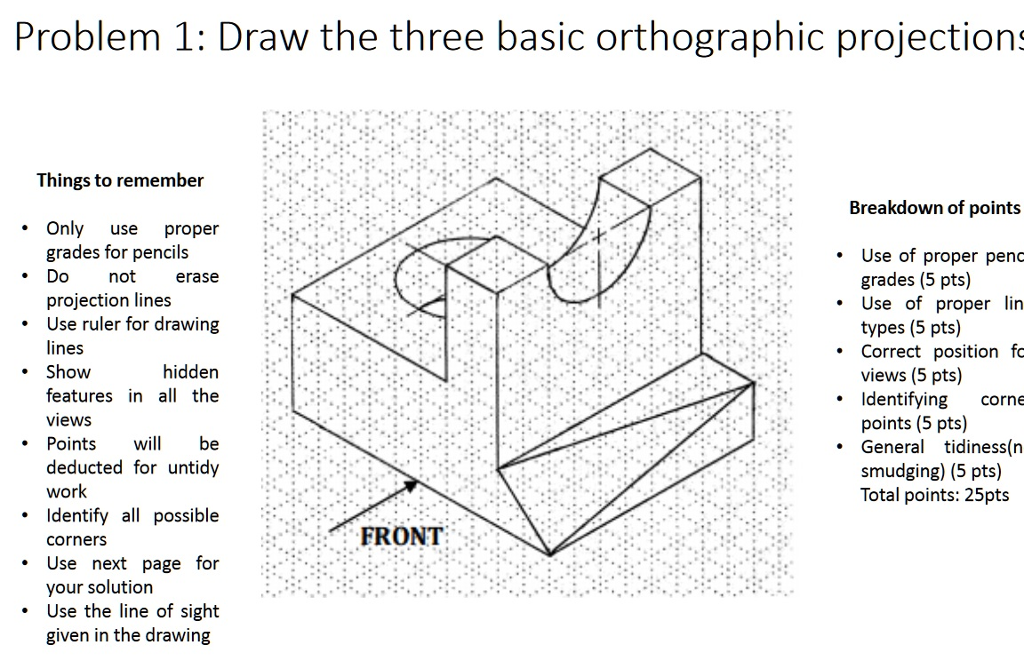
Answered Q1 Draw the orthographic Projections… bartleby
1. The straight lines which are drawn from various points on the contour of an object to meet a plane are called as _________ a) connecting lines b) projectors c) perpendicular lines d) hidden lines. View Answer 2.

Punit Patel on Twitter "T319 All FYIT2 Students are informed to solve attached orthographic
Quiz Course Try it risk-free for 30 days Instructions: Choose an answer and hit 'next'. You will receive your score and answers at the end. question 1 of 3 Which of the following statements are.

Solved Part 1 (Orthographic Projections) Extract the
orthographic projection, common method of representing three-dimensional objects, usually by three two-dimensional drawings in each of which the object is viewed along parallel lines that are perpendicular to the plane of the drawing.For example, an orthographic projection of a house typically consists of a top view, or plan, and a front view and one side view (front and side elevations).

Orthographic Projection, Drawing A Comprehensive Guide.
Example: Application of Precedence. Profile or side views are represented by small letters with double dashes eg. a. The line of intersection of VP and PP is denoted as X1Y 1. Projectors and the lines of the intersection of planes of projections are shown as thin lines. Draw X1Y1 line to represent the line of intersection of VP and PP.

Orthographic Projection
1.1 Orthographic Projection - Definition Orthographic projection is a means of representing a three-dimensional object in two dimensions. It uses multiple views of an object, from points of view rotated about the objects centre through increments of 90 degrees. Equivalently, the views may be considered to be obtained by rotating the object

First Angle Orthographic Projection
Orthographic projection is a form of parallel projection in which all the projection lines are orthogonal to the projection plane, [2] resulting in every plane of the scene appearing in affine transformation on the viewing surface.

Orthographic projections Question 11, Engineering Drawing, Technical Drawing YouTube
Orthographic projection is a form of parallel projection in which the top, front, and side of an object are projected onto perpendicular planes. All 3 views are shown in the final orthogonal.

First Angle Orthographic Projection Example
Orthographic projections allow us to represent the shape of an object using 2 or more views. These views together with dimensions and notes are sufficient to manufacture the part. Figure 1-1: Orthographic projection. 1.2.1) The Six Principle Views The 6 principle views of an orthographic projection are shown in Figure 1-2.

Solved Question 6. Draw the three orthographic projections
1. Draw the projections of the following points. (a) Point A 20 mm above the HP and 15 mm in front of the VP. (b) Point B 25 mm above the HP and 10 mm behind the VP. (c) Point C 15 mm below the.

orthographic projections problem 8 YouTube
Orthographic projection is a technique used in spatial visualization, which is an essential skill for engineers in taking an idea that initially only exists in the mind, to something that can be communicated clearly to other engineers and eventually turned into a product.

orthographic projection problem5 with 3d model and live example by vikash academy. VIKASH
How can all objects be presented? 3-d (pictorial) or orthographic projection (three views of the object) What is the front view? Longest side that shows detail, overall length and height, is drawn in bottom left corner. What is the top view? Is drawn directly over front view, shows length and width. What is the right side view?

Solved Draw the three basic orthographic projections Draw
Orthographic Projections is a technical drawing in which different views of an object are projected on different reference planes observing perpendicular to respective reference plane. Different Reference planes are; -Horizontal Plane (HP) -Vertical Plane (VP) -Side or Profile Plane (PP) Different views are; -Front View (FV) -Projected on VP

Orthographic Projection Exercises Pdf bibatt
Figure 6.1.8 6.1. 8: Orthographic projection of the stepped block with the surfaces numbered for reference. Notice that the front view (1) is the key to the drawing because it most clearly shows the shape of the object. It tells you the object is "L" shaped from the front.

Orthographic Drawing Technical Drawing Orthographic Projection Gambaran
Orthographic projection is also known as orthogonal projection is a means of representing three-dimensional objects in two dimensions. Geometrical figures are in two dimensions, hence they may be drawn to their actual sizes and shapes on a sheet of paper as it is also in two dimensions. A solid is a three-dimensional object, hence it will not.

ORTHOGRAPHIC PROJECTION IN ENGINEERING DRAWING YouTube
An orthographic drawing or orthographic projection is a representation of a three-dimensional-object using several two-dimensional planes. You can use an orthographic drawing to better see objects in 3D, or to plan a complex object or environment! There are a few more things you need to know about orthographic drawing, so let's talk about those.

Orthographic Projection_Problem 7 YouTube
An orthographic projection is a way of representing a 3D object by using several 2D views of the object. Orthographic drawings are also known as multiviews. The most commonly used views are top, front, and right side. You can imagine it as positioning yourself directly in front, above, or to the right of an object and drawing only what you can see.